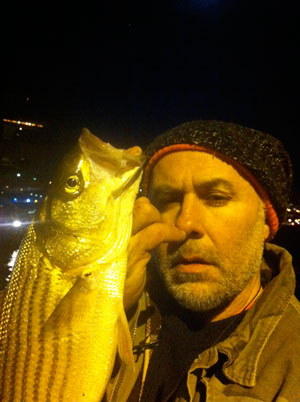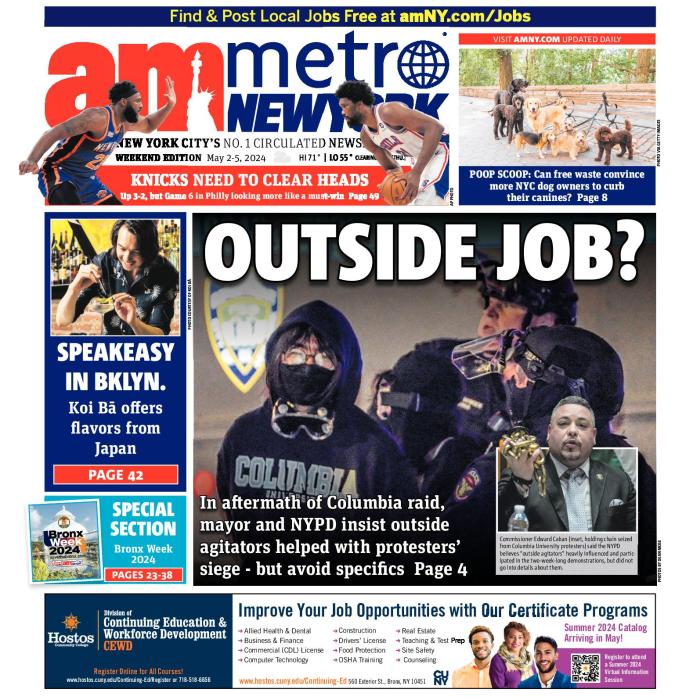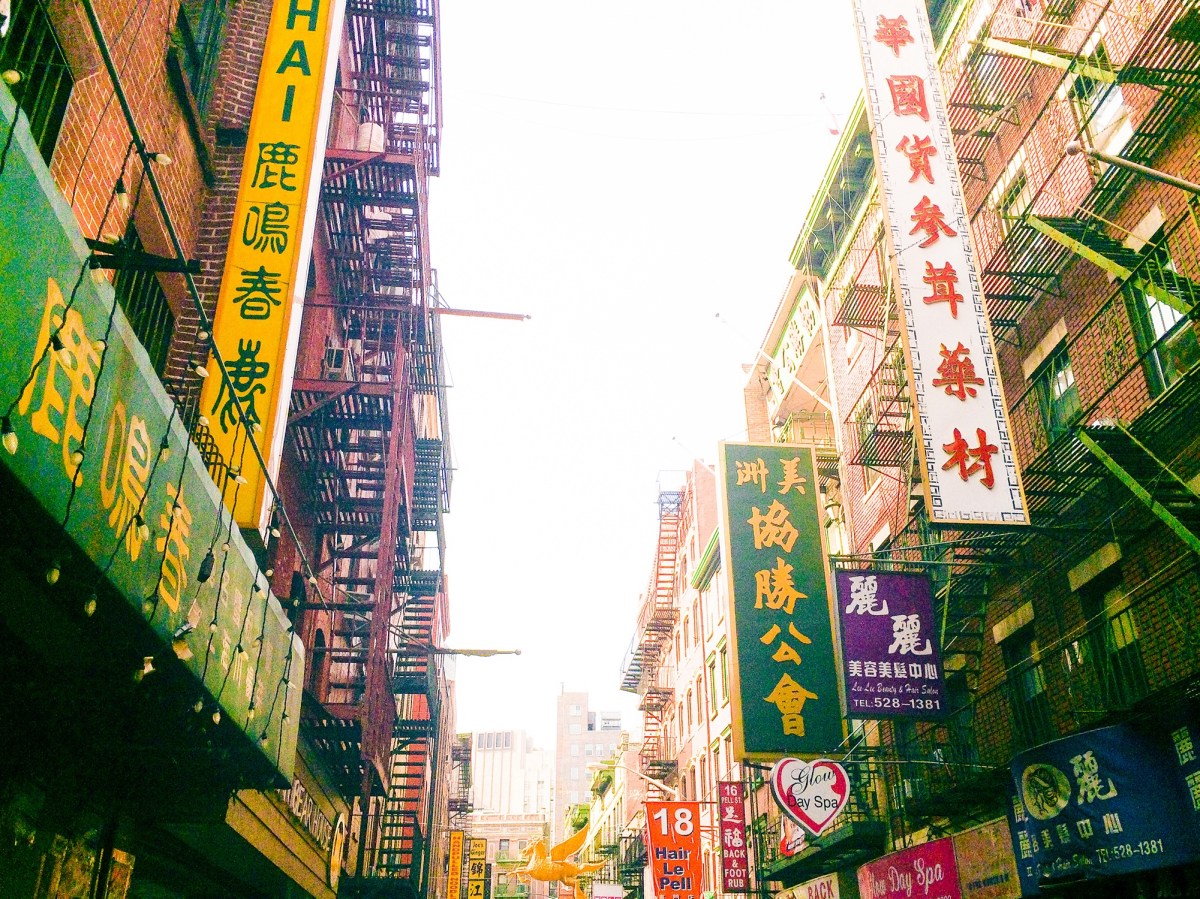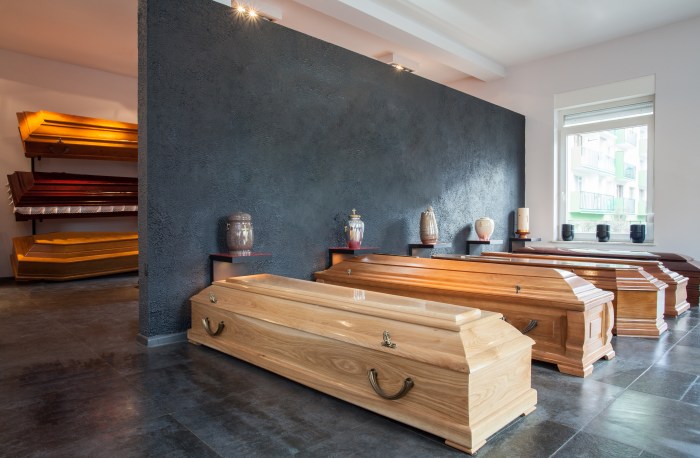
BY ANDREW CASTRUCCI | I grew up on the lower Hudson River. I fished the piers from Hoboken and Edgewater to under the G.W.B.
Fishing the Hudson River since I was 12 years old, I caught thousands of eels, hundreds of tommycods, shad, perch, snapper and cocktail blues, bullhead catfish, blue crabs — and my first striper in 1974, the year they passed the Clean Water Act.
Watching the Hudson come back to life was a fascinating experience for a young teen. From my kitchen window growing up in Cliffside, I stared daily at the Seatrain pier off the cliffs in Edgewater, wondering if life existed in these waters. I was always on the lookout for fishermen. But most of the time, the action on the pier was criminal mischief, a place to ditch your car or have a secret meeting.
Finally, in 1972, Chippy Quinn and I gathered our gear on a rainy Saturday morning. At the river, we were greeted by the strong odor of saltwater, urine and a toxic brew of an old forgotten industrial era. The Seatrain dock had rusty cables swinging, a constant whisper of loose rattling steel — you could feel the ghosts, some sort of time warp like it was 1950.
Our bait was sand worms…2-ounce weight, No. 2 hook, as the tide started to move. We were on the longest pier on the Hudson. Its corners had two huge steel bulkhead ties the size of massive breasts, holding boats loading freighter ghost ships.
We caught six eels each that day. My hands were slimed as I struggled to unhook them. I sold all of mine for a dollar a pound to my German neighbor Willie Walter on Adolphus Ave. They stayed in his basement sink overnight, still alive. In the morning, he nailed them to a tree and peeled their skin, then pickled them. Eels were a delicacy for the Italian and Germans from the old country, especially during the holidays.
At this point in time, I was afraid to eat the fish from the Hudson. Chippy Quinn and I, and later, Mike Petrosino, Paul Clark and Frank Napoli returned every weekend in those days to fish the Seatrain pier. We were getting used to the bite habits of migratory and native fish. Tommycods with colder water, stripers till December, catfish when the cherry trees blossomed.
One day, Willie Walter was waiting at the top of the cliff, knowing from his binoculars that the bite was hot that day. He was waiting like a child for his candy, but I wanted $3 a pound for my first keeper striper. I settled on $2. That equaled $15 for a fat-bellied striped bass, plus an extra $ 5 for five eels. Oooh did he love those eels! He lived to 94.
Later, Willie would try to catch his own eels — until they stole his Mercedes hubcaps. I soon became Willie’s hired fisherman. I had good cannabis money at age 13.
By my late teens, the Seatrain pier was becoming a big hangout 24/7. We hopped freights back and forth to the Meadowlands, typical juvenile behavior.
It took me 23 years to cross the river. It felt like I was crossing an ocean, to the newfound land. In the early ’80s, I moved to the Lower East Side and opened up the A&P Gallery with my brother Paul on rough-and-tumble E. Fourth St. between Avenues B and C, later moving into a squat on E. Third St. between Avenues C and D — from the frying pan into the fire — later calling it Bullet Space.
A strong cultural scene was developing Downtown mixed with the criminal element — squatters, junkies, punks, runaways, graffiti artists and art school dropouts.
A lot of fish roamed Alphabet City at this time. It was junkie haven…CBGB’s, St. Mark’s Place. There were Gringo, Harley, Squid, Slim, Bubblegum, Cheese, Jimmy Gestapo, Charlie Bananas — names like out of a “Bowery Boys” episode or a Charles Dickens novel. There were squats, abandoned buildings, the fallen American dream, a dystopian landscape. Abandoned cars littered the area under the F.D.R. The city was slowing coming out of its recession. Reagan was elected president.
I needed to find some beauty, an escape from the decadence around me. Art didn’t fully cut it for me. Between gallery openings, on my days off, I started trekking the East River. Striped bass where making a big comeback. PCB’s where being reduced in river fish. Mostly Puerto Rican and Chinese immigrants fished the river. Fishing was a religion to the Chinese. Puerto Rican men were dreaming of their island youth; instead of living on subsistence diets with food stamps, they caught their own food.
East River striper fishing soon became a black market on the sidewalks of Chinatown. Puerto Rican kids made some loose change on these sidewalks — loose change that turned into 30 pounds of bass for $60 to $90, sometimes topping $100, in a 30-minute rush hour. This was mostly under the cover of night under subway bridge overpasses, hidden around corners.
I felt an adrenaline rush, like a sexual buzz, from passing Chinese workers with stripers laid out on newspaper on the sidewalk. They knew fresh fish when they saw them: clear eyes, red gills. They sold them for only $2 a pound when the fish markets ran up to to $6 a pound.
The river was starting to get cleaner by the late ’80s. It was safe to eat stripers, one a month. I would keep only younger fish, “schoolies” — 22 inches to 26 inches long — safer to eat. Big ones were carrying too many toxins. I also threw back stripers under 20 inches. One out of 50 fish was a legal 28-inch keeper. We had to hide our catches.
I was getting better at finding stripers. I became a dock rat. Pre-9/11, docks were freer to roam. I was beating out the Chinese and Puerto Rican master striped bass fisherman. I had the touch. Reeling in not too fast, a few jiggles of the lure, 20-pound test line, shad lures weighted down soaked in bunker oil. Some guys used spark plug weights, anything you could recycle out of abandoned cars that littered the area under the elevated F.D.R. Drive.
I was catching about a 100 stripers a migration cycle, returning half back to the sea. On Pier 17, a Chinese man quoted me a proverb: “You will live a long life since you return some fish back to the sea.” But the Chinese were the worst, keeping everything — even 12-inch stripers.
As soon as I caught a striper, I would bleed it right away, cutting it above the tail fin. When I got home, I gutted them. At first, with no running water in my squat, I washed them outside and gutted them with fire hydrant water. I had to fight off junkies cleaning their needles.
My next step was cutting out the belly fat, dark meat, then eliminating the skin. These three cutouts eliminated most of the toxins.
Later, in 2006, when my squat was legalized and we had gas, hot water, electricity, I would bake bass in the oven. I would first soak the bass in wine for a few hours, add some salt, pepper, lemon, a little butter, then cook for seven minutes at 350 degrees, a white light meat. I would often serve it with brown rice, asparagus and white wine.
Cooking became a lot easier when we our squat was legalized. But it was amazing how much we learned to cook on a hotplate with jimmied wires. Sometimes I would cook on my potbelly stove. We collected wood crates in Chinatown, and washed-up logs under the Brooklyn Bridge. I carried a 5-gallon jug of water up five flights of stairs every other day. I didn’t need to go to a gym: I chopped wood and carried water. When my squat was legalized, I sort of fell apart and gained 15 pounds.
On the Lower East Side, the Chinese taught me a lot about fish. They were the best fishmongers. When I overfished a few stripers and needed some extra money, I would sell a few on the sidewalks of Chinatown during the nighttime rush hour.
I sold my fish a few hours after I caught them. I would always find ice at the South St. Seaport market while they where unloading trucks.
My presentation was sharp, with the fish laid on top of burlap on the sidewalk, sprayed with some ice and river water. In 10 to 15 minutes, I had sold out. I once sold a 32-inch, 16-pounder for $50.
I had to be fast and quick. I felt like a drug dealer. I escaped into the night, after a quick hit-and-run.
I felt like a true New Yorker eating fish from the East River, a real dock rat. I became that Edgewater Rat of my youth, the ones the Cliffside Boys would battle in gang fights if caught climbing the cliffs.
I started growing a tail, moving faster, growing fins. My skin started to shine in silver, iridescent lines. I became slippery, not with olive oil skin, but with fish oil. My sense of smell increased, I could see in the dark.
I became a hardcore urban angler, addicted to the bite. I became a junkie with a fishing pole and hook, trying to get the big one that got away last night. I stalked the piers at night, where the only people out were junkies, hookers, tranies, suicide jumpers, fishmongers, South St. fish market workers unloading with gaffe in hand, around a 50-gallon drum fire, staying warm in November cold spells.
With my visions, I was seeing tears showing up in the sidewalk cracks where stripers formerly roamed. I become an expert on finding them, under docks, rips, rock formations — in the sidewalk cracks, abandoned cars, in the canyons of the Lower Lower East Side.
Full moon, new moon. … Slack tide, ebb tide. … Two days before, two days after spring and fall migrations. … I became that fish, that striped bass.
Like they say, you are what you eat.
This piece will appear in an unconventional cookbook to be published in Italy next year, in which artists share their personal stories and recipes.

















